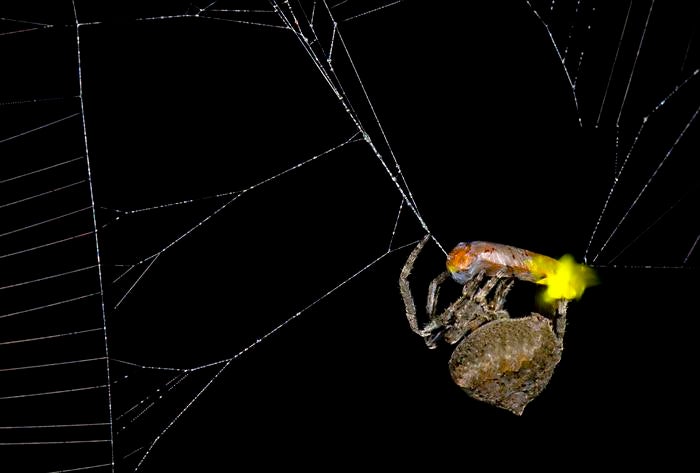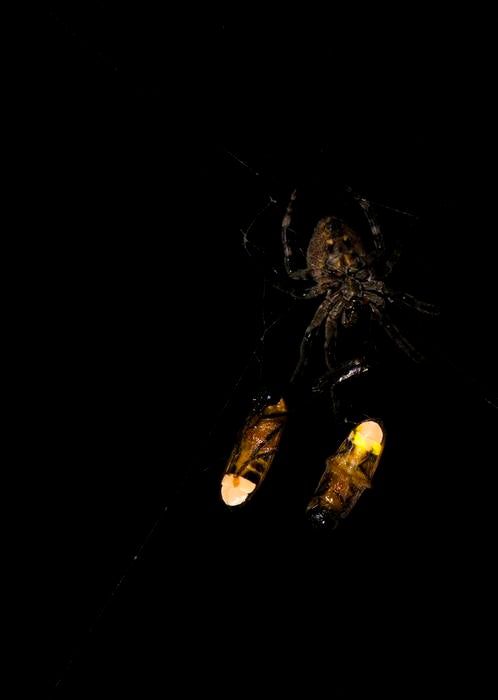Spider uses male fireflies as glowing bait to catch more prey
Researchers suspect there may be similar yet undiscovered examples of animals tricking prey to trap more of same species
Chinese scientists have found that the orb-weaving spider manipulates fireflies caught in its web to lure and trap others of the species for its next meal.
Abscondita terminalis fireflies use light-emitting cells on their abdomens to communicate with others of the species, with males using multi-pulse flashes and females making a single-pulse.
Researchers found that the spider, Araneus ventricosus, tricks male fireflies trapped in its web to mimic the flashes of females to catch other males.
“The outcome is that the entrapped male fireflies broadcast false signals that lure more male fireflies into the web,” they wrote in a study published in the journal Current Biology.
The study began after one of its authors, Xinhua Fu from Huazhong Agricultural University, China, saw male fireflies ensnared in the webs of orb-weaving spiders while in the field. He noticed that there were rarely any female fireflies.

Scientists conducted field studies to observe both the behaviour of the spider and the signals of the fireflies.
They discovered that the web more often captured male fireflies when the spider was present compared to when it wasn’t around.
Further analysis showed that signals made by male fireflies caught in the web seem like the single-pulse glow used by females to attract males.

But the ensnared male fireflies seem to rarely lure other males when they are alone in the web without a spider.
Scientists suspect that the spider alters the signal of the male firefly.
“While the eyes of orb-web spiders typically support limited spatial acuity, they rely more on temporal acuity rather than spatial acuity for discriminating flash signals,” Daiqin Li, another author of the study, said.

“Upon detecting the bioluminescent signals of ensnared male fireflies, the spider deploys a specialised prey-handling procedure involving repeated wrap-bite attacks,” he said.
Researchers called for more studies to understand if the spider’s venom plays a role in manipulating the ensnared firefly’s light-flashing pattern.
The study indicates that some animals can manipulate and induce behaviour changes in exceptionally specific prey. More such examples in other creatures are yet to be found in nature.
Join our commenting forum
Join thought-provoking conversations, follow other Independent readers and see their replies
Comments
Bookmark popover
Removed from bookmarks